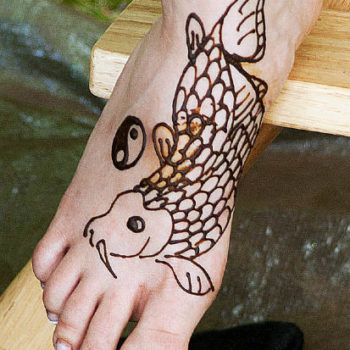Legal Translation of Foreign Language Tattoo Writing
Did you know that 40 percent of today’s population has some sort of tattoo? Not surprisingly, legal translation of foreign language tattoo scriptures and tattoo writing is required for court cases.
Many people are needing tattoos of foreign language phrases and words translated. Such tattoo translations are often written using Chinese, Korean, Arabic, Japanese, Aramaic, Hebrew, Sanskrit, Russian, Thai, Hindi, Persian, and Greek scripts.
Unfortunately, often times neither the customer nor the artists know the foreign language being used, and thus neither know whether or not the translation is actually correct. All too often this leads to some embarrassing revelations down the road.
As tattoos are, for all practical purposes, permanent, can a tattoo artist be sued for negligence when they ink an incorrect translation? In other words, should both the inker and the inked be protecting themselves by utilizing a foreign language translation service to ensure they are not mistakenly using nonsensical or even insulting translations?
Mistranslated Tattoos and Torts
Believe it or not, there is a growing area of law that can be described as Tattoo Law – and it is developing exactly around this issue of mistranslated tattoos.
For example, in a recent small claims decision coming out of Nova Scotia, an individual wanted to get a tattoo that read ‘you’re so beautiful’. Instead, she is now sporting a tattoo that reads ‘you’re so beatiful’ (see Ullock v. Slaunwhite).
In making its decision, the court approached this as a tort (negligence) and ultimately ruled against the plaintiff based on the following facts:
- The defendant (the tattoo artist) drafted the tattoo phrase on a computer and showed the plaintiff the phrase and the plaintiff did not object
- The defendant took off a stencil of the phrase from the computer and showed the plaintiff the stencil, and the plaintiff did not object
- With the plaintiff’s permission, the defendant tattooed the phrase onto the plaintiff’s arm
The question is whether the tattoo artist has a duty to ensure that a foreign language tattoo is in fact correct. In order to establish negligence, remember, a plaintiff must prove that:
- The defendant had a duty to the plaintiff
- The defendant breached that duty by failing to conform to the required standard of conduct
- The defendant’s negligent conduct was the cause of the harm to the plaintiff
- The plaintiff was, in fact, harmed or damaged.
Following the precedent in the Ullock case, it would seem that so long as the customer signs off on the design, the artist should be protected from liability as this would conform to the required standard of conduct. However, that being said, it would be good practice on the part of both the artist and the customer to use a foreign language translation service as a ‘best practice’ before putting ink to skin.
Foreign Language Tattoo Writing Translations in the Court Room
To change the subject slightly, there is also the issue of interpreting what a tattoo means and making assumptions about the individual based on his or her tattoo(s).
Take for example a criminal case coming out of Fresno, California that involved gang members tattooing a seven year old kid with a gang symbol. During jury selection, the defense submitted jury questions asking whether or not the jurors had tattoos themselves. The reasoning was that the sides could get useful information from these tattoos – including gang affiliations.
Setting aside any discussion of the right to privacy, tattoos do often come up in trials and, when the tattoo of a juror or witness includes foreign language, a foreign language translation will be required.
However, there is an issue as to relevance (i.e., whether or not a tattoo can be entered into evidence). In general, the courts have found a tattoo to be relevant and thus able to be entered as evidence when the tattoo is used for identification purposes (and not for making assumptions about morale character as described above). See for example the UK case R v Byron TLR 10/3/99 which held that evidence of a factually descriptive nature, such as a tattoo, which in the context of other evidence in the case may be highly probative, does not necessarily make it evidence of identification.
To summarize, the use of ‘tattoo evidence’ in court will be determined by the law of evidence. If the tattoo is relevant, it will be allowed in as evidence. However, in order to be deemed relevant, the tattoo must serve an identification purpose. If so, and if the tattoo scripture or the tattoo writing contains a foreign language, then an translation of the foreign language tattoo writing or tattoo scripture – for identification purposes only – will be allowed. However, it would be good practice for an attorney to submit jury instructions specifying that the tattoo writing translation from a foreign language to English is to be used as to making an identification only and not towards a character judgment.
Contact legal translation agency All Language Alliance, Inc. to obtain English translation of foreign tattoo writing in Khmer, Traditional Chinese, Aramaic, Korean, Hebrew, Simplified Chinese, Japanese, Sanskrit, Russian, Thai, Hindi, Persian, Arabic, and other languages.
#translationforlawyers #tattootranslation #foreignlanguagetranslation #foreignlanguagetattoo #tattootranslationservices

